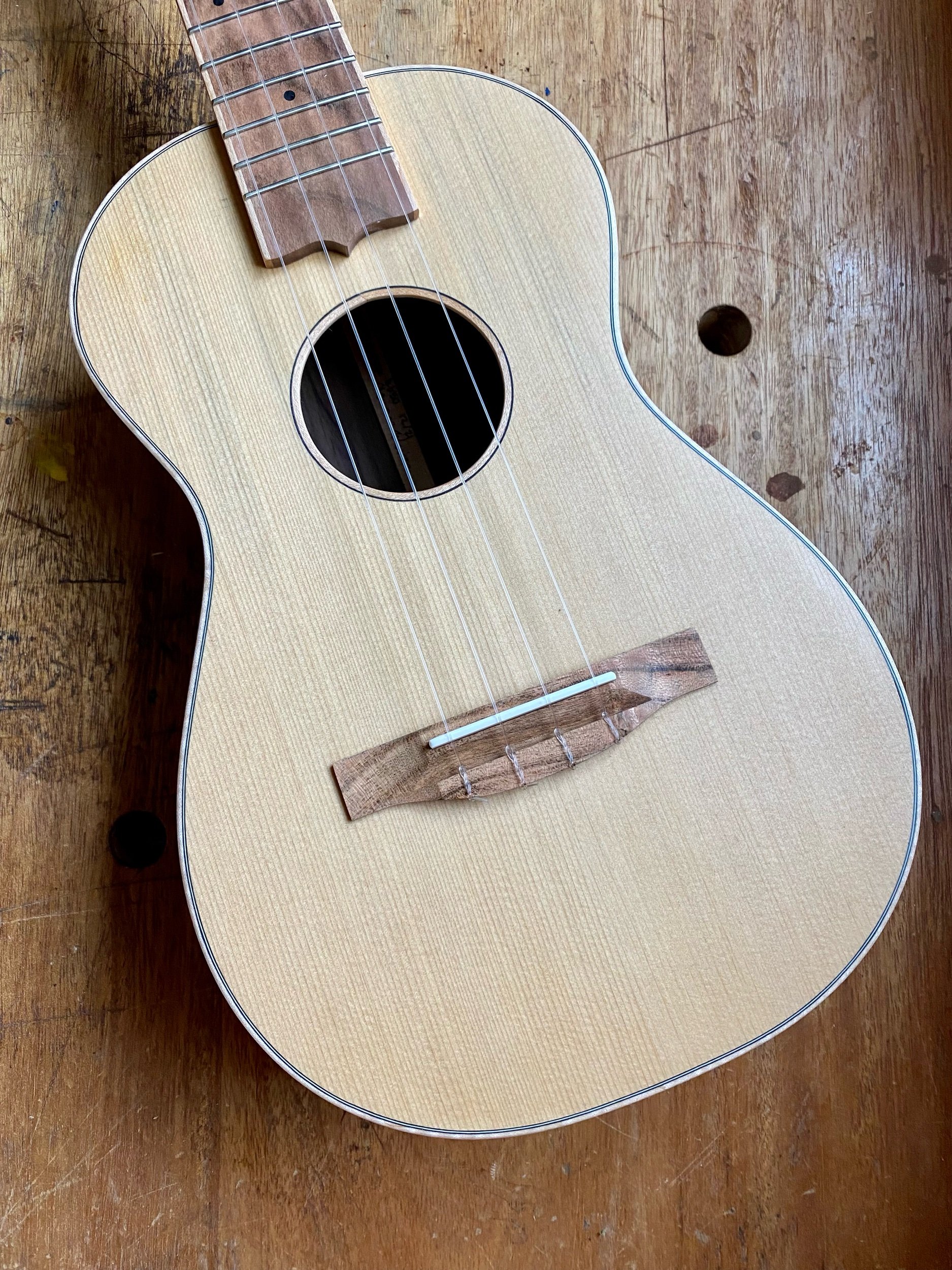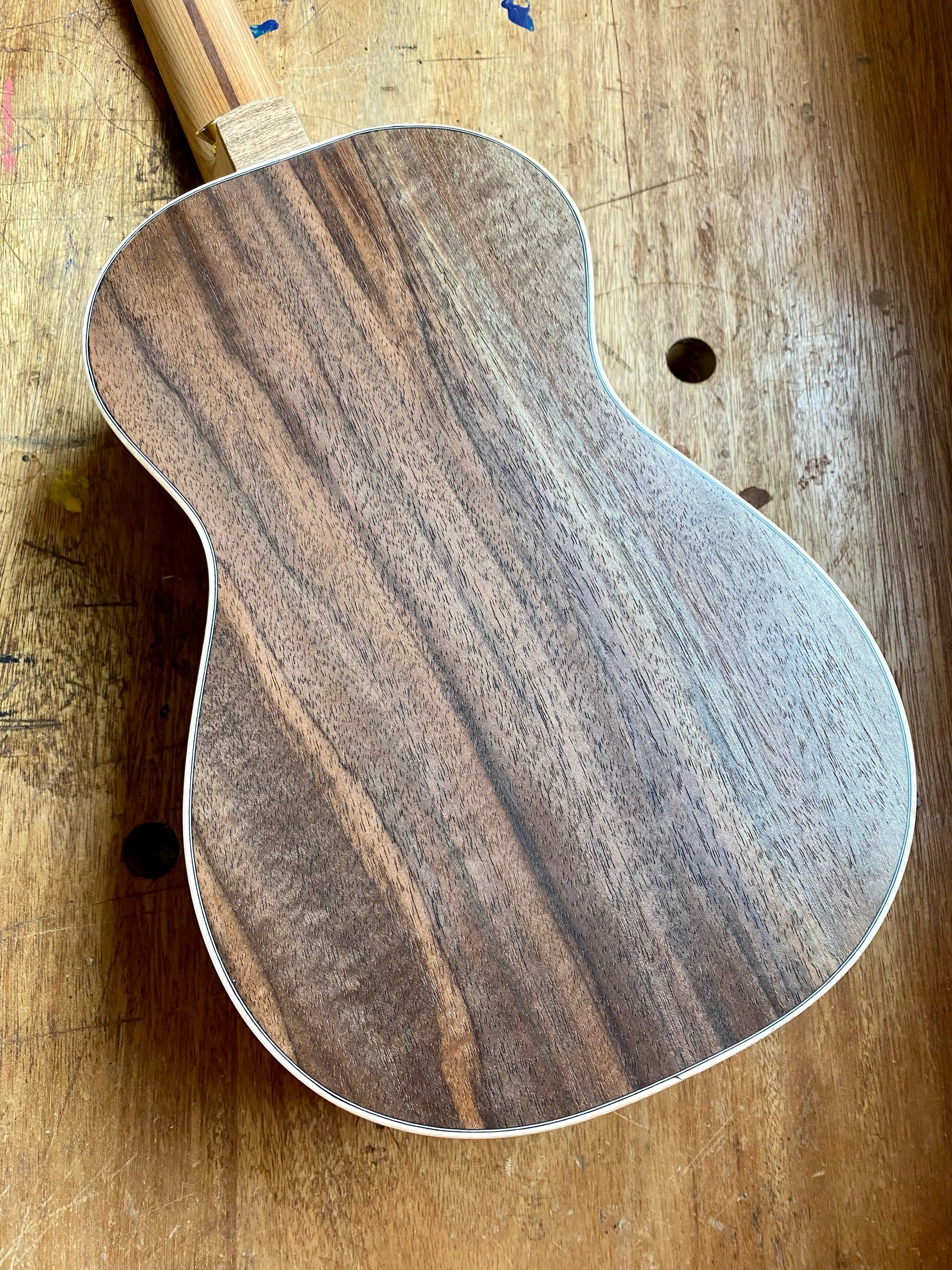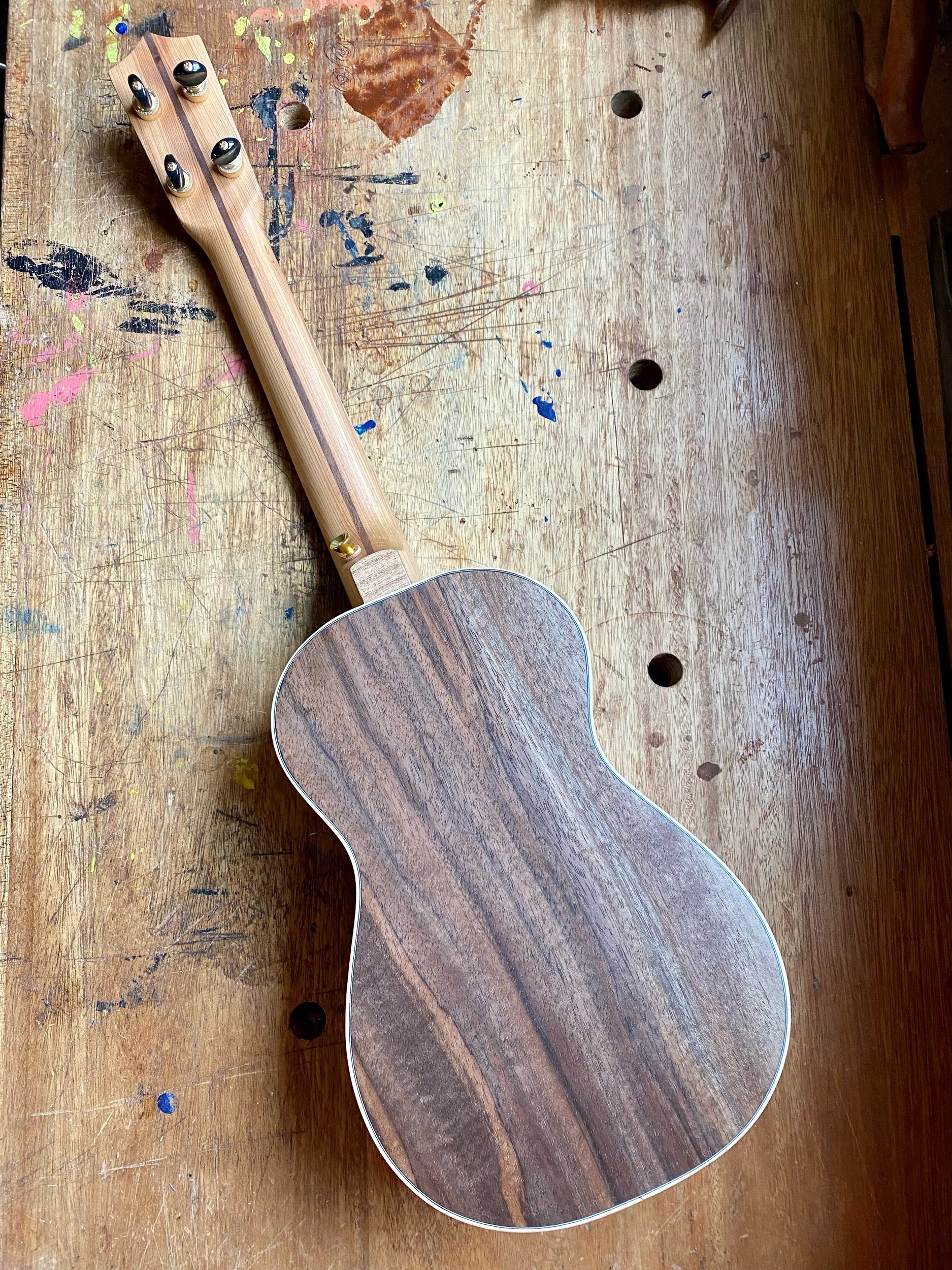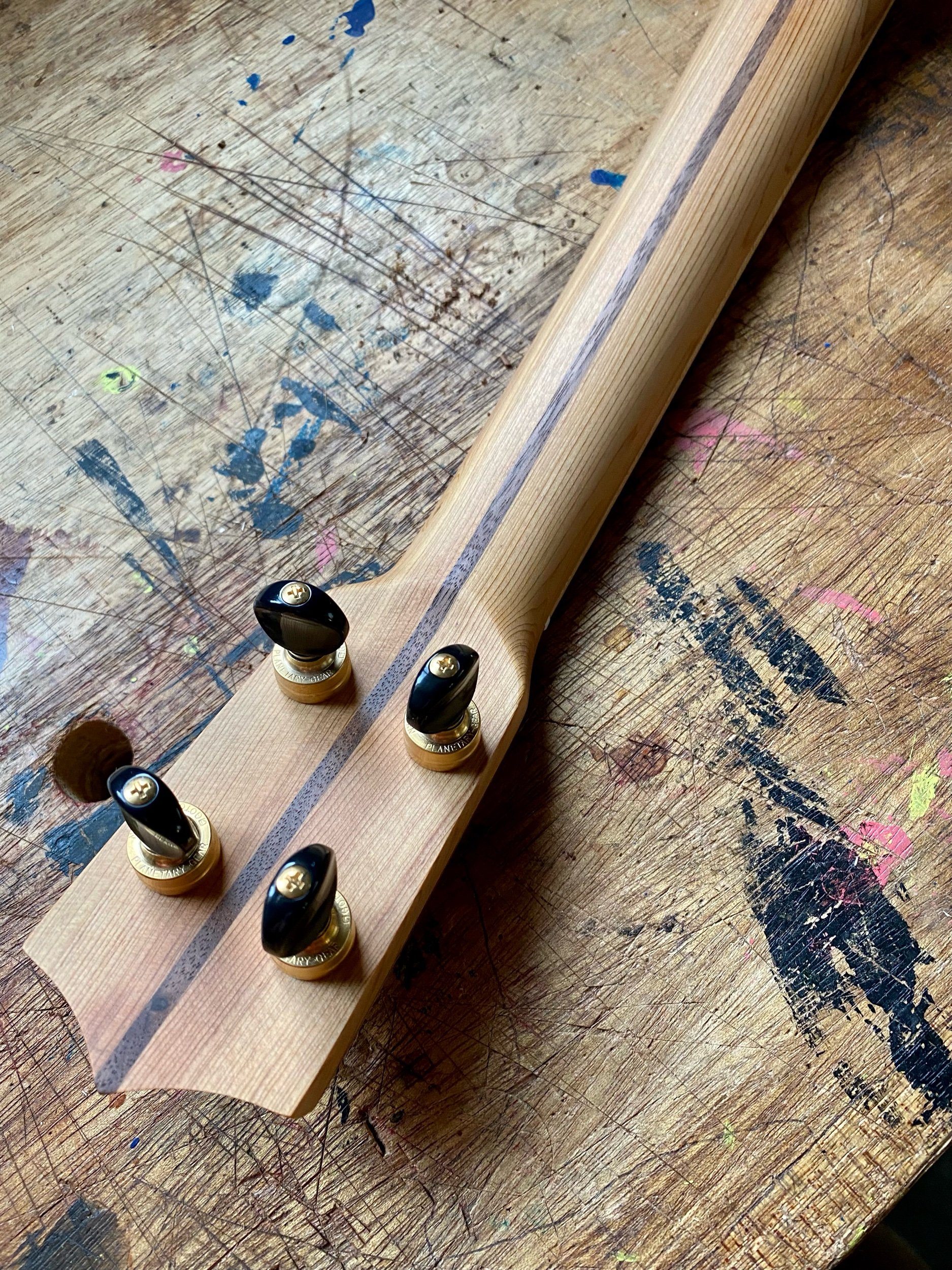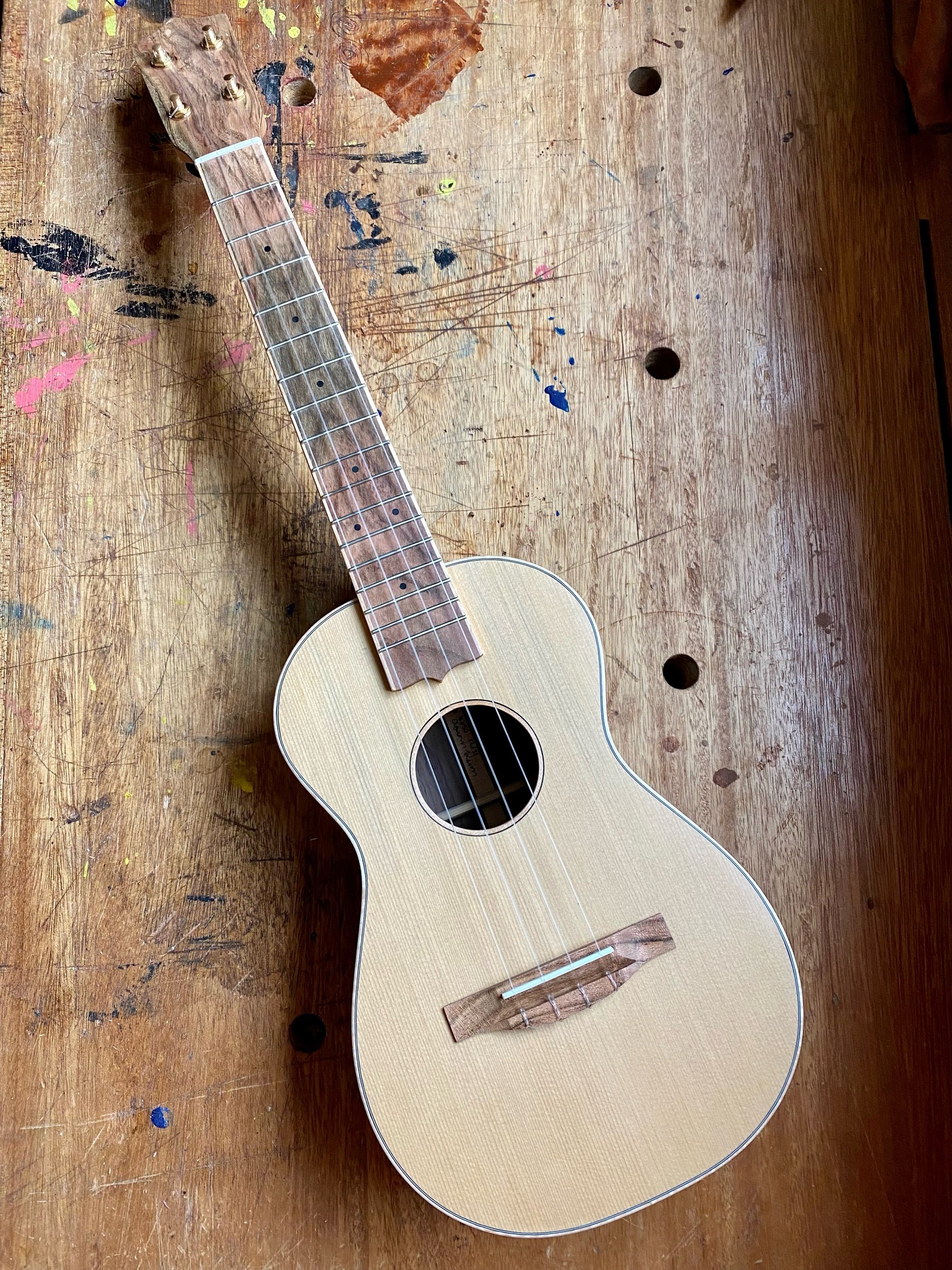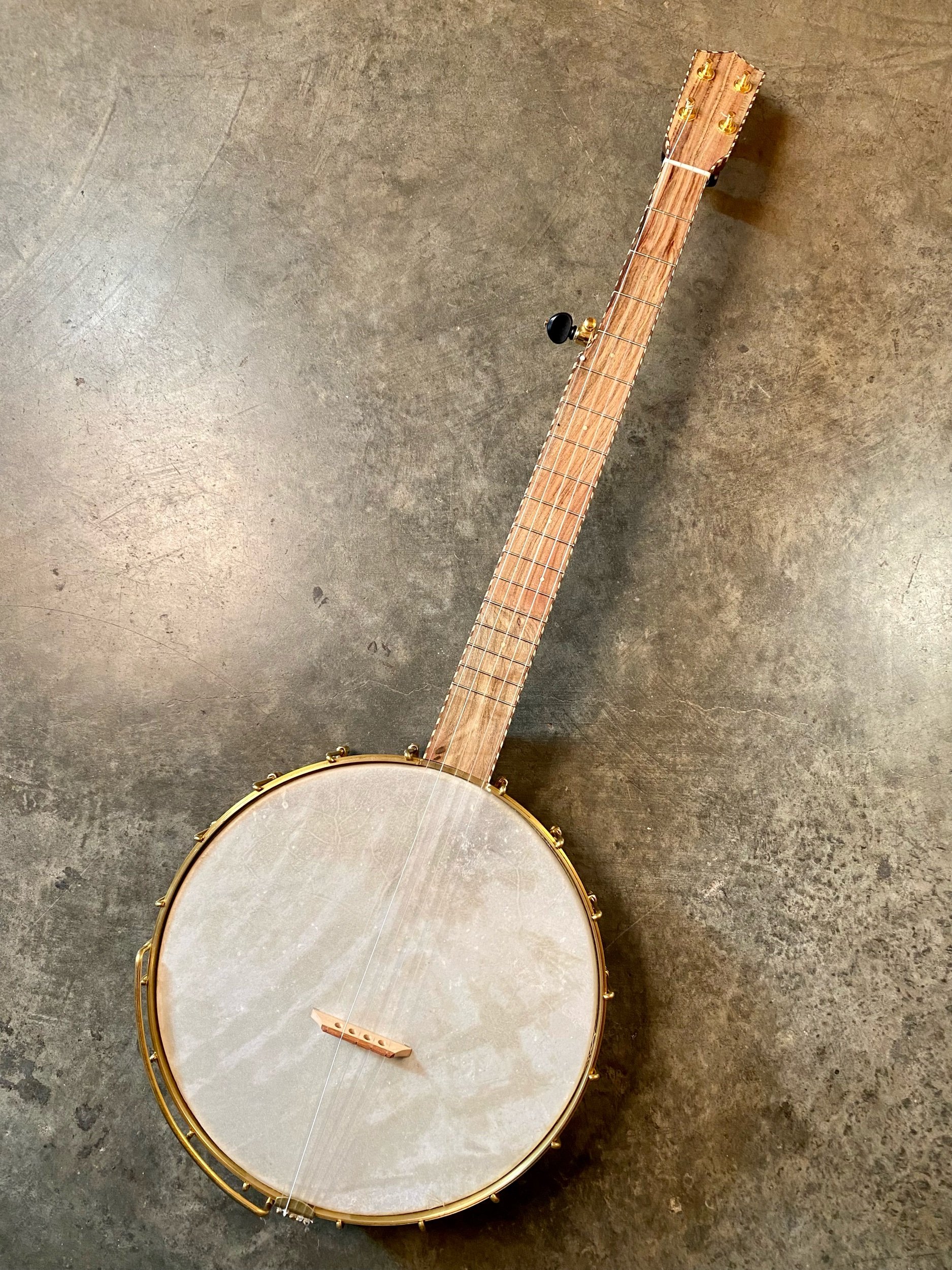Spruce and maple is always a good idea. Crisp, loud, sweet and precise. Add some Bearclaw figure to the top and quilting to the back and it’s a knock out! The spruce top is old growth salvage from Alaska, the maple is from the Carpenter Ant stash, the pistachio is from California orchards and the fir is from an old floor joist.
“Dear Aaron, Nicole & Henry,
I just received the BEDAZZLING Alto uke Aaron crafted for me & am so excited to hold it in my hands & play it! I just love the selection of beautiful wood & the fine detail in the walnut binding & bridge. The quilted maple (back & sides) has such depth one can almost lose themselves in it while gazing at it. The matched bookends on the sides are lovely. I appreciate the fine grain in the neck & the way it is set off by the beautiful pistachio stripe. I couldn’t be more pleased with the dramatic grain in the pistachio fretboard & headplate. Since I like all things Alaskan & since bears hold a special interest for me, the Bearclaw Alaskan Spruce top is dynomite!
Though this isn’t designed to be a mere footnote to the above effusive praise, I can’t give high enough kudos for the super bright sound of this gorgeous Alto Uke. Its amazing action makes me feel as though I have better control playing this than my first mass-produced soprano uke.
Thank you so much for hitting this one out of the park for me, Aaron!
- S. P. ”







